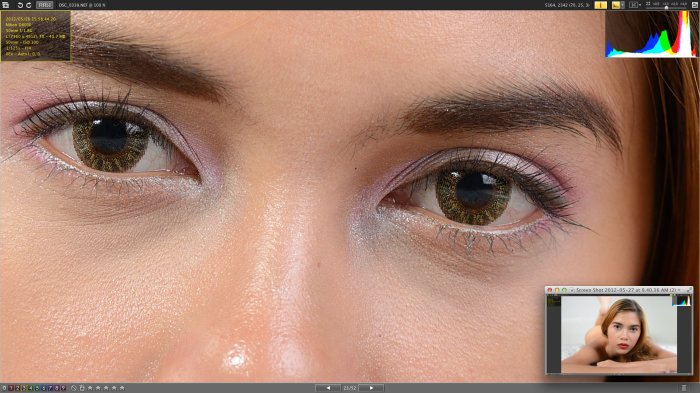By Jerry Tieng
I have been a Nikon user all my life, a digital shooter for the last ten years, and a full frame shooter ever since the D700 shipped 3 years ago. It was with great excitement, therefore, when Nikon announced the 36-megazillionpixel D800 – much to the surprise of the entire photographic community because Nikon has never been known to play the megapixel arms race nor for uber dramatic product announcements. But this one got everyone in a tizzy and needless to say, the waiting list was longer than even the longest Apple launch day queue.
After 3 long tortuous months of waiting, I finally got hold of a D800E and it was certainly worth the wait as this baby was well worth the hype!
Initial impressions:
It is slightly smaller than the D700 and it had better heft befitting the requisite Made in Japan seal.
It has a very, very short viewfinder blackout time which one normally sees in a higher end model such as the D3s.
It focuses faster than my D700 and can auto-focus using f/8 lenses (think f/4 zooms with 2x teleconverters attached).
It uses the same battery as the D7000 and the V1 / J1 mirroless cameras, and lasts at least 500 images.
It takes both CF and SD cards anf they can be set as write to both, spill over, or RAW + JPG on separate cards, or photos on CF and videos on SD. My preferred setup is RAW on CF with JPGs and Video on SD.
RAW files checks in at 40Mb each while JPGs are 16Mb.
The LCD now has an automatic ambient light sensor and its larger size is a sight to behold.
Image Quality:
First off, as a landscape shooter, I find the D700 a joy to work with as I find that it has a lot of headroom when it comes to manipulating my files to tweak each and every bit of color goodness out of my files. I attribute that to the large photosites that comes up with a low megapixel count camera.
On the other hand, I noticed a lack of fine detail that are readily apparent from the landscape scenes shot by fellow enthusiasts with the venerable and popular 24-megapixel Canon 5D. As such, I contented myself to sharing my photos via the web, printing no more than A3+, or stitching panoramas!
So it was with great trepidation when Nikon announced that they are targeting fine art landscape shooters whose main tools are medium format cameras. I said WTF Nikon!? You are doing a Canon! I knew from my PhD in Googling that higher pixel count means smaller photosites, which means less light captured hence more noise introduced due to signal amplification. But what I didn’t realize is that in the last 3 years, Nikon has not only improved its sensor technology but also the electronics related to signal processing.
The ISO100 to ISO1600 images I got was certainly as clean as my D700 shots. But what struck me, of course, was the amount of sheer detail now being captured. A 100% crop of the head and shoulder shot below shows remarkable detail to the extent that you can see the pattern used by the contact lens manufacturer.

To be continued.
